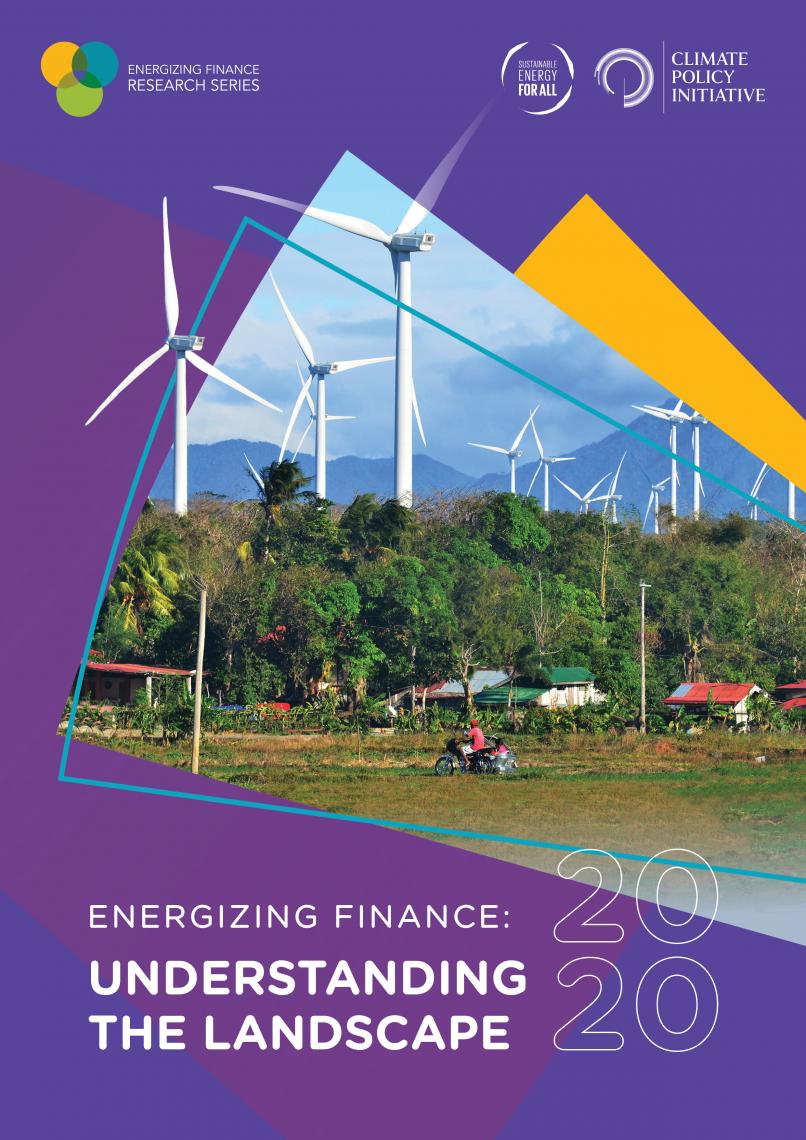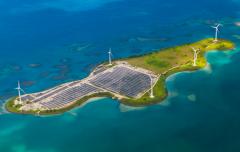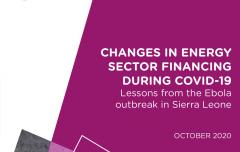Energizing Finance: Understanding the Landscape 2020
Main findings
- Finance for energy access remains far below the investment needed to achieve Sustainable Development Goal 7 (SDG7) by 2030
- Investments are not going to the countries with the greatest need
- Investment is not flowing to the right energy solutions, which can jeopardize the attainment of other Sustainable Development Goals
- The overall energy access investment portfolio continues to be dominated by a few large projects and a handful of capital providers
- Private sector investments remain elusive in the clean cooking sector
Despite significant advances over the last decade, electricity and clean cooking access continue to elude more than 789 million and 2.8 billion people, respectively, around the world. The COVID-19 pandemic has highlighted the severe implications that a lack of reliable energy access can have on healthcare systems, water and sanitation services, clean cooking, and communication and IT services. This has served as a wake-up call to accelerate action to achieve SDG7 - access to affordable, reliable, sustainable and modern energy for all - by 2030 to ensure that past progress is not reversed and that developing countries increase their resilience to future challenges.
The Energizing Finance: Understanding the Landscape report, developed by Sustainable Energy for All in partnership with Climate Policy Initiative and produced annually since 2017, provides a comprehensive analysis of commitments flowing to the two key areas of energy access: electrification and clean cooking. This fourth edition of the report tracks finance for electricity and clean cooking committed in 2018 to 20 Sub-Saharan African and Asian countries - known as the high-impact countries (HICs) - that together are home to more than 80 percent of people globally without energy access.
In addition to capturing finance commitments for energy access, this year's report provides deep-dive analyses of Rwanda and Bangladesh and proposes a framework to improve the accuracy and consistency of reporting finance for projects with gender equality objectives.
Year after year we continue to observe a widening cumulative gap between required and actual investment to achieve universal energy access in high-impact countries, with finance not flowing to those most acutely in need.
With less than a decade left to achieve universal energy access, we need to move far beyond a business-as-usual, incremental approach. This will require an unprecedented collaboration between donor and national governments, development finance institutions (DFls) and private investors to align all financing for SDG7.
We need innovation in policies and regulatory frameworks, institutions and instruments, and business models to speed up efforts. National governments should commit to domestic policies that prioritize sustainable solutions to support green recovery while ensuring efficient use of limited public budgets. Donors and DFls should deploy a wider range of instruments to manage, share and reduce risk, while working more closely with governments and the private sector to mobilize investment for energy access. It is especially crucial in the era of COVID-19, when public budgets and private investments are drying up, that donors fill the investment gaps rather than contribute to them.
While this report tracks the energy access financing landscape of 2018, its development has been influenced by the COVID-19 pandemic. The recommendations provided are intended to lay the foundations for longterm, green, resilient and inclusive growth. Many developing countries have achieved significant progress in recent years, and we must ensure that they continue to make similar advances despite current challenges.
Main findings
- Finance for energy access remains far below the investment needed to achieve SDG7 by 2030: USD 41 billion of annual investment is required to achieve universal residential electrification, but only one third, or USD 16 billion, was tracked in the HICs in 2018. Finance for clean cooking tripled from USD 48 million in 2017 to USD 131 million in 2018 but remains substantially below the estimated annual USD 4.5 billion required to achieve universal access by 2030. With only marginal year-on-year increases in commitments for energy, it is becoming increasingly clear that the financing community is failing to deliver on SDG7.
- Investments are not going to the countries with the greatest need: In 2018, USD 3.3 billion of electricity access finance was committed to the 14 HICs in Sub-Saharan Africa (SSA) - less than 20 percent of total finance targeting residential access in the HICs - while SSA accounts for 70 percent of people in HICs without electricity access. The six HICs with the lowest electricity access rates, where more than 70 percent of the population does not have access to electricity - Burkina Faso, Chad, Congo (DR), Madagascar, Malawi and Niger - were all in the bottom half of the HICs in terms of finance for electricity committed. Similarly, for clean cooking, 18 countries (excluding Bangladesh and Kenya) that are home to over 2.2 billion people without access to clean cooking solutions attracted only 25 percent of the investment tracked. Countries like Congo (DR) and Ethiopia, where 95 percent of the population lacks access to clean cooking, attracted less than 1 percent of the annual investment they needed.
- Investment is not flowing to the right energy solutions, which can jeopardize the attainment of other SDGs: Investment in fossil fuel generated electricity has increased, locking countries into decades of carbon emissions, import dependency and stranded asset risk. Fossil fuels accounted for the largest portion of electricity finance commitments to HICs for the first time in at least six years, driven largely by grid-connected fossil fuel projects in Bangladesh. Meanwhile, financing for grid-connected renewables declined for the first time since 2013. Also, finance for minigrids and off-grid solutions remained at less than 1-1.5 percent of the total finance tracked for electricity. This limited volume of investment is unacceptable in light of the collateral damage: issues of gender equality, economic opportunity, climate change, and protection of land and forests are all suffering from this inertia.
- The overall energy access investment portfolio continues to be dominated by a few large projects and a handful of capital providers: This is particularly true of clean cooking investment, as it is dominated by public funding originating from a small number of institutions. For instance, Bangladesh alone accounted for 47 percent of total tracked clean cooking investment, arising mainly from two large projects financed by the World Bank Group and the Green Climate Fund.
- Private sector investments remain elusive in the clean cooking sector: Private finance commitments increased only marginally to USD 32 million in 2018, from USD 21 million in 2017. However, unlike public finance that focuses mainly on improved cookstoves (ICS), private sector finance flowed to a range of modern or renewable fuels, such as ethanol, biogas and LPG. The overall lack of investment can be attributed to limited public finance to alleviate risk for private sector investors and to stimulate consumer demand.
Recommendations
- Coordinated action from development finance institutions and donor governments is needed in Sub-Saharan Africa
- Investment in renewable energy and transmission and distribution infrastructure should be accelerated to achieve energy access while maximizing synergies with the SDGs
- Financing of fossil fuel projects as a means of closing the energy access gap should be terminated
- Policy reform and the adoption of sustainable and innovative business models and financial instruments are important to accelerate deployment of mini-grids and off-grid solutions
- National governments are instrumental in expanding clean cooking access through targeted subsidies and policy support
- There is an urgent need to expand innovative clean cooking business models and financing mechanisms to a larger group of technologies
See also: Energizing Finance series




